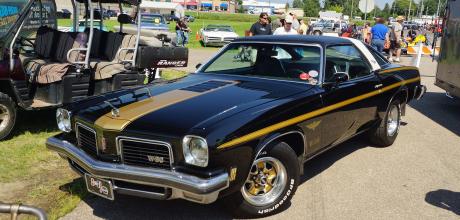Collectable American cars built after 1971
The Cut Off? Evans ponders collectable American cars built after 1971...
There was a time, in the not-too-distant past, when it was often widely considered that Detroit didn’t build any collectable cars after 1971. The idea behind it was that with the emergence of safety regulations, fuel economy and emissions standards, all the fun and excitement that once characterised cars that rolled off Motor City assembly lines was essentially gone or vastly reduced. Today it is perhaps quite significant, for that cut-off (beginning with cars of the 1972 model year, we might add) is almost exactly 50 years ago.
Granted, when we look at cars like the Dodge Challenger and Plymouth ’Cuda, Ford Mustang, Pontiac GTO, Oldsmobile 4-4-2 and others, 1971 marked the last year these cars were either available with true big-block engines, were still offered as stand-alone models, or had styling unencumbered by excess gingerbread and clumsy facelifts. As the Seventies wore on and we witnessed not one, but two energy crises, the adoption of massive 5mph bumpers and engines that struggled to make more than 200 horsepower in factory tune – it did appear that dark times had indeed descended on America’s auto industry.
I would however, like to present a different argument. You see, I happen to like a lot of Seventies and Eighties American iron. Whether it’s a small-block pony car like the late Seventies Camaro Z28, the over-the-top Pontiac Trans Am, wedge-shaped Ford Mustang Cobra or any one of the sizeable and sensibly proportioned compact, mid-size and full-size cars from the period, for me they have a certain something. Many were smaller, lighter and/or better balanced than their predecessors. And while they might not have boasted anywhere near the same performance on paper (at least from an acceleration standpoint) in many cases they handled, rode and stopped far better.
They also boasted greater usability thanks to developments such as high-energy ignition and while the factory tune did leave a bit to be desired in some cases, their basic engineering was often shared with their hallowed Sixties predecessors. That means that under the spaghetti vacuum hoses and retarded ignition, there lies the essential building blocks for creating a reliable and well-performing ride. Even something as mainstream as a late 1970s or early 1980s Malibu can be turned into a cool car today and will readily accept more powerful engines, including big-block V8s.
Additionally, cars like the contemporary Camaro Z28 and Firebird Trans Am, once seen as caricatures, are now highly desirable and enjoy iconic status today. When you look at post- 1971 iron, there’s also the chance of acquiring unique and interesting cars that are bound to draw a crowd at any cruise or show. How about an AMC Spirit AMX, Dodge Magnum R/T or turbocharged Buick LeSabre Sport Coupe? Chances are you’ll turn more heads than just about anything else if you cruised up in one of these today.
Even going back a few years earlier, cars like the 1972-1975 Hurst/Oldsmobile, 1972-1974 Pontiac GTO and 1972-1977 Grand Prix are all machines that offer distinctive styling and decent performance.
If you want to expand your horizons a little and if you can find them, how about something like a big open-top 1972-1975 convertible or station wagon? They are still out there and if you look hard enough you will find decent, solid examples, still often for less than their popular mid- to late-Sixties counterparts.
Interest in Seventies and Eighties vehicles has really been growing. Prices for even just ho-hum sedans, provided they’re in good condition, are regularly topping five figures now and if you want a solid, rust-free pick-up or sport utility from this era, don’t be surprised to fork out $20,000 or more stateside for a clean one.
Yes, it can be argued that some of the fun and sizzle went out of Detroit offerings after 1971, but today a new breed of collectors are getting into the hobby and they love late Seventies and Eighties kitsch with its tape stripes, raised white letter tyres and T-roofs. At this point it represents a marked difference from the traditional classic car norm, which, any way you slice it, keeps the hobby fresh and interesting. And isn’t that what we all want anyway?


